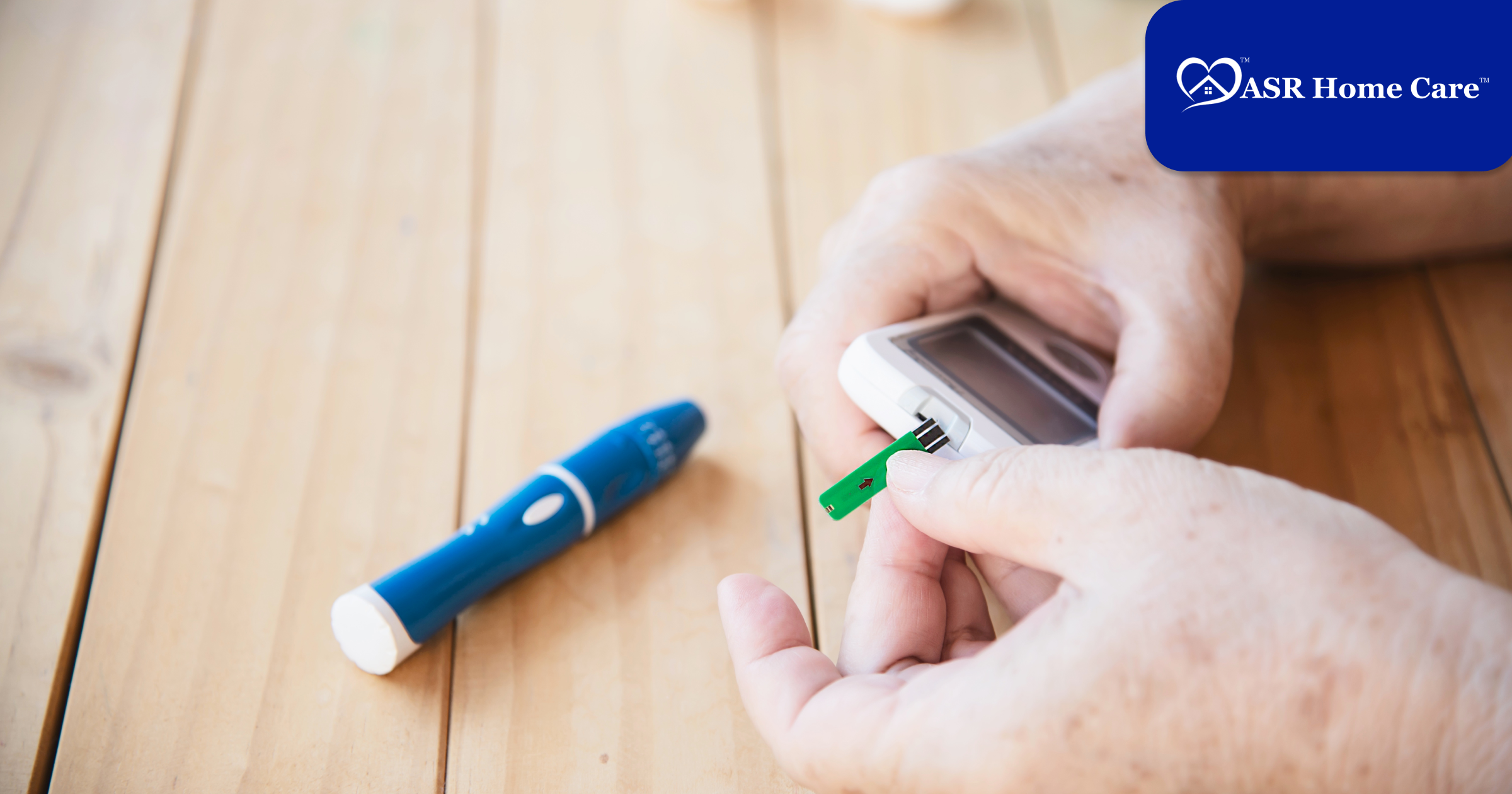ASR Homecare: Compassionate Care In The Comfort Of Your Home.
Blogs

Care Giving
Diabetes Management in Older Adults: Balancing Blood Sugar Levels and Preventing Complications
05-31-2024
Diabetes Management in Older Adults: Balancing Blood Sugar Levels and Preventing Complications
Diabetes mellitus is one of the most prevalent diseases among the older population, either as a primary or secondary disease. Managing diabetes in the comfort of their homes due to the diabetes management services provided by caregivers can make this challenging task slightly easier. Prevention is better than cure and it is never more true than when managing diabetes. Proper adherence to medicine, nutritious dietary plans, careful monitoring of blood glucose levels, and regular exercise are some of the diabetes management services provided by professional caregivers. Elders with this disease require some extra help managing diabetes. Caregivers help the elders in managing diabetes by adhering to the essential advice of their doctors and thus preventing complications that may arise with managing diabetes.
Meal plans
The first step in managing diabetes is ensuring a proper diabetic diet that is both nurturing and healthy for the patient. There is no restriction as to why a diabetic patient’s plate cannot be as visually appealing and delicious as anyone else’s. Managing diabetes means ensuring your patient has a meal that is low in glucose, sodium, cholesterol, and fat while also appealing to their respective tastes. Caregivers managing diabetes provide a balanced diet by determining the calories needed to keep up the patient’s energy and also maintain their blood glucose control and dividing those calories between meals and snacks throughout the day.
Leafy green vegetables like broccoli, spinach, lettuce, celery, kale, brussels sprouts, cucumbers, and others like carrots and beets are full of important vitamins and minerals that can help in managing diabetes patients. Fish, skinless lean chicken, legumes like kidney and black beans, chickpeas, beans, and barley can provide the necessary proteins. Fruits like tomatoes, oranges, clementines, cherries, and berries can be used as snacks or incorporated into the meals. Other diabetic-friendly snacks to appease the palate may include hummus with carrots and cucumbers, whole grain crackers, granola bars, and sugar-free yogurts with berries. Caregivers managing diabetes must also ensure proper water intake to maintain the hydration levels of diabetic patients. Managing diabetes patients does not mean that their plates can’t be versatile. Caregivers managing diabetes can not only control their patients’ sugar levels but can also provide meal enjoyment by incorporating diabetic-friendly foods in their meal plans and rotating them throughout the week.
Medication management and routine blood glucose monitoring
Diabetic patients are often prescribed certain medicines to lower their blood sugar and cholesterol, among others. Some of these medicines are taken before meals and some after. As our seniors age, they often become lax with their medicines or mix up their doses. Caregivers managing diabetes must ensure that the proper dosage of medicines is taken at their proper time to maximize their usage. Caregivers managing diabetes must also keep track of any potential hazards of medications or side effects and report them immediately to their primary physicians.
Additionally, caregivers managing diabetes must also regularly monitor the blood sugar levels of elderly diabetic patients and keep a record. This can easily be done at homes with glucometers and glucometer strips. Caregivers managing diabetes also keep a log of these readings so that any deviation from normal, either an episode of hyperglycemia or hypoglycemia, can be reported to their primary physicians effectively.
Routine checkups
Caregivers managing diabetes also ensure that elderly diabetic patients do not miss a scheduled checkup with their doctor. Caregivers managing diabetes provide transportation rides to and from the hospital so that the elderly patient can safely reach their destination. Diabetic patients must also report to their doctors every 3 months for full body exams to ensure that the treatment is progressing as desired.
Regular exercise
Caregivers managing diabetes also encourage their patients to perform regular light exercise and physical activity. Even a short walk can go a long way in maintaining the blood sugar levels of the diabetic patient. Weight management due to gentle exercise and walking can also help in managing diabetes and controlling blood sugar levels.
Foot care
Diabetic foot is one of the most common complications associated with chronic hyperglycemia. Diabetic patients suffer from poor circulation and nerve damage which can put their feet and legs at risk for certain complications. Caregivers managing diabetes ensure that their feet are dry and properly moisturized with medicated diabetic foot creams. Caregivers managing diabetes massage their feet and legs, checking them for any blisters, cuts, or sores, and providing proper foot hygiene. Caregivers managing diabetes also schedule podiatric appointments at regular intervals to prevent any such complications from arising.
Managing diabetes can be a daunting task but with proper vigilance for potential complications, routine checkups, and diligence for medication management, professional caregivers at ASR Home Care™ ensure that state-of-the-art care and support is provided to our elderly clients managing diabetes.
Top Picks